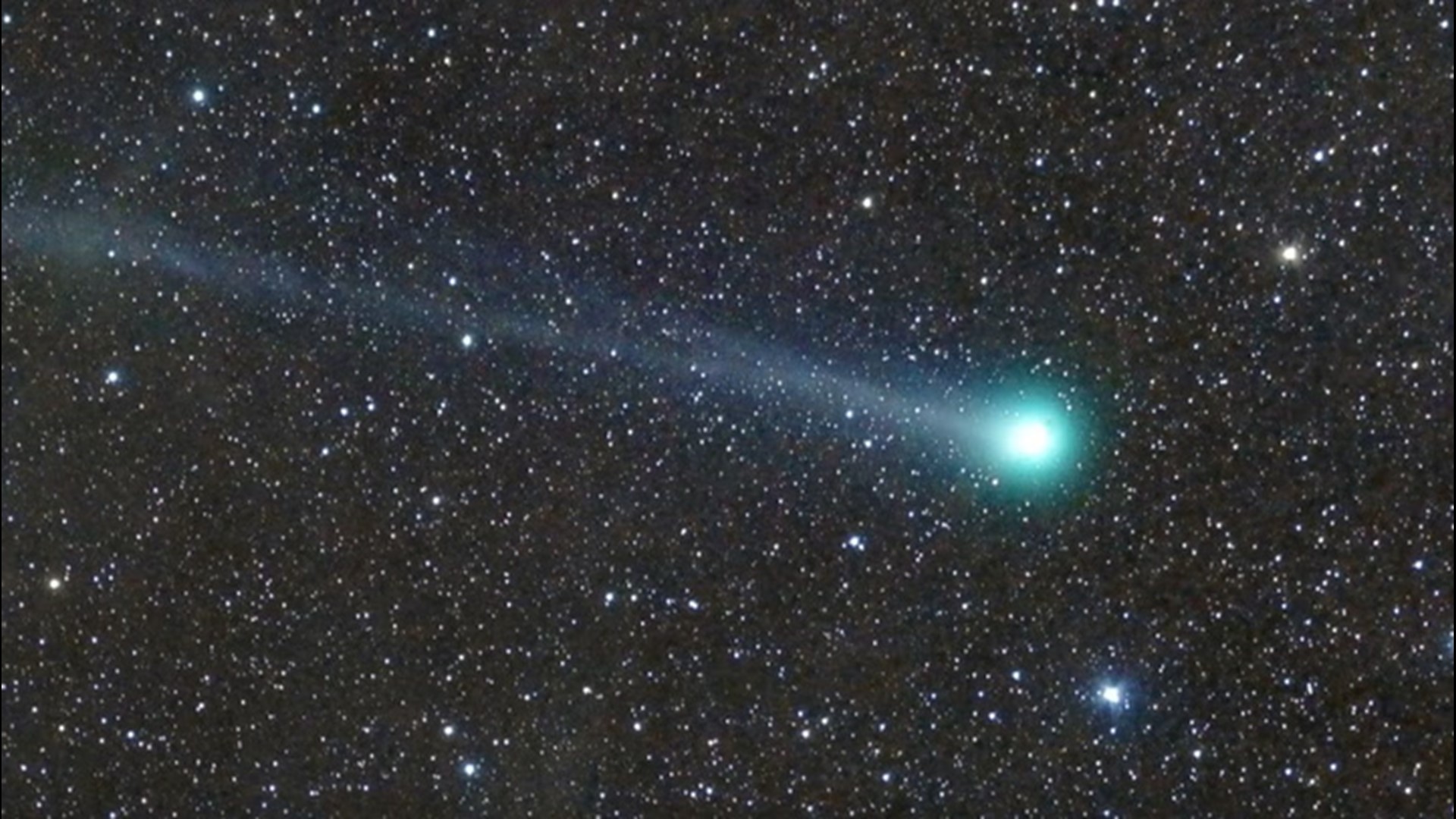As the calendar turns to May, the milder nights may entice more people to venture outside under the heavens for a night of stargazing. The new month will feature plenty to see after the sun has set, including the chance to spot a newly discovered comet.
Many of the upcoming astronomical sights can be seen by just stepping outside into the backyard without having to travel to a dark area.
Here are the top three astronomy events to look for in May:
1. Eta Aquarid meteor shower
When: May 4-5
The Lyrids in late April brought an end to a meteor shower drought, but those that missed the celestial light show will have another chance to catch some shooting stars in early May.
The Eta Aquarids will peak on the night of Monday, May 4, into the early morning of Tuesday, May 5. The Eta Aquarids are the only major meteor shower of the month, and there will not be another until late July.
This is the best meteor shower of the year for folks across the Southern Hemisphere with up to 40 meteors per hour, according to the American Meteor Society (AMS). "From the equator northward, they usually only produce medium rates of 10-30 per hour just before dawn," the AMS said.
2. Final supermoon of 2020
When: May 6-7
The last in a series of four supermoons since early February will glow just two nights after the peak of the Eta Aquarids.
A supermoon is a full moon that appears slightly bigger and brighter than normal, and after this month, stargazers will need to wait until April of 2021 to see one again.
Supermoon or not, May's full moon is commonly called the Flower Moon, as it is the time of year when most flowers are in bloom. Other names for the month's full moon include the Corn Planting Moon, the Milk Moon and the Frog Moon.
3. Comet SWAN
When: Mid-May
A new comet is approaching the sun, and by mid-May, it may glow brightly enough to be visible in the night sky.
Last month, Comet ATLAS took center stage as it was getting brighter and brighter, showing promise that it would eventually be bright enough for people to see without a telescope. But then, the comet broke apart unexpectedly, dashing any hopes of it being visible to the naked eye.
Now, a new comet has appeared, named Comet SWAN, and it has the potential to outshine some stars in the sky.
Comet SWAN is projected to get brighter by the middle of the month and will make its closest approach to Earth on May 13 at a distance of around 50 million miles.
"That's not a particularly close approach; nevertheless, it could put on a good show. If current trends continue, the comet may be brighter than 3rd magnitude (like stars in the Pleiades) as it glides through the constellation Pisces," SpaceWeather.com said.
Comets can be fickle and unpredictable, so only time will tell the fate of Comet SWAN. Be sure to follow AccuWeather Astronomy on Twitter for future updates on the comet.
On the night of April 7 into April 8, people around the globe were treated to the biggest and brightest supermoon of the year. Just one week later, the moon put on another show, meeting up with Jupiter, Saturn and Mars in the early-morning sky on April 15.
By the time that the Lyrid meteor shower reached its peak near the end of the month, the moon was in its new phase. This allowed onlookers to enjoy the first meteor shower since January on a night without the moon shining bright.
A mile-wide asteroid zipped past the Earth on Wednesday, April 29, giving some people the opportunity to spot the giant space rock with their telescopes. Although it was called a "Potentially Hazardous Asteroid," it poses no risk of hitting the planet in the near future.
Deeper in the expanse of the universe, astronomers have discovered a star orbiting a supermassive black hole in the heart of the Milky Way galaxy in such a way that once again fell in line with Einstein's theory of general relativity.
Back on Earth, NASA attached a small helicopter to the Perseverance rover that will travel to Mars later this year. This will become the first helicopter to fly on another planet.
Astronomers celebrated the anniversary of the Hubble Space Telescope, which launched into space 30 years ago. Hubble has sent back incredible images of the universe and has led to major discoveries.
NASA also reflected on the Apollo 13 mission, which took place 50 years ago in April of 1970. This mission is often referred to as a "successful failure" as NASA was able to bring three astronauts safely home after their spacecraft suffered a major malfunction on its journey to the moon.

